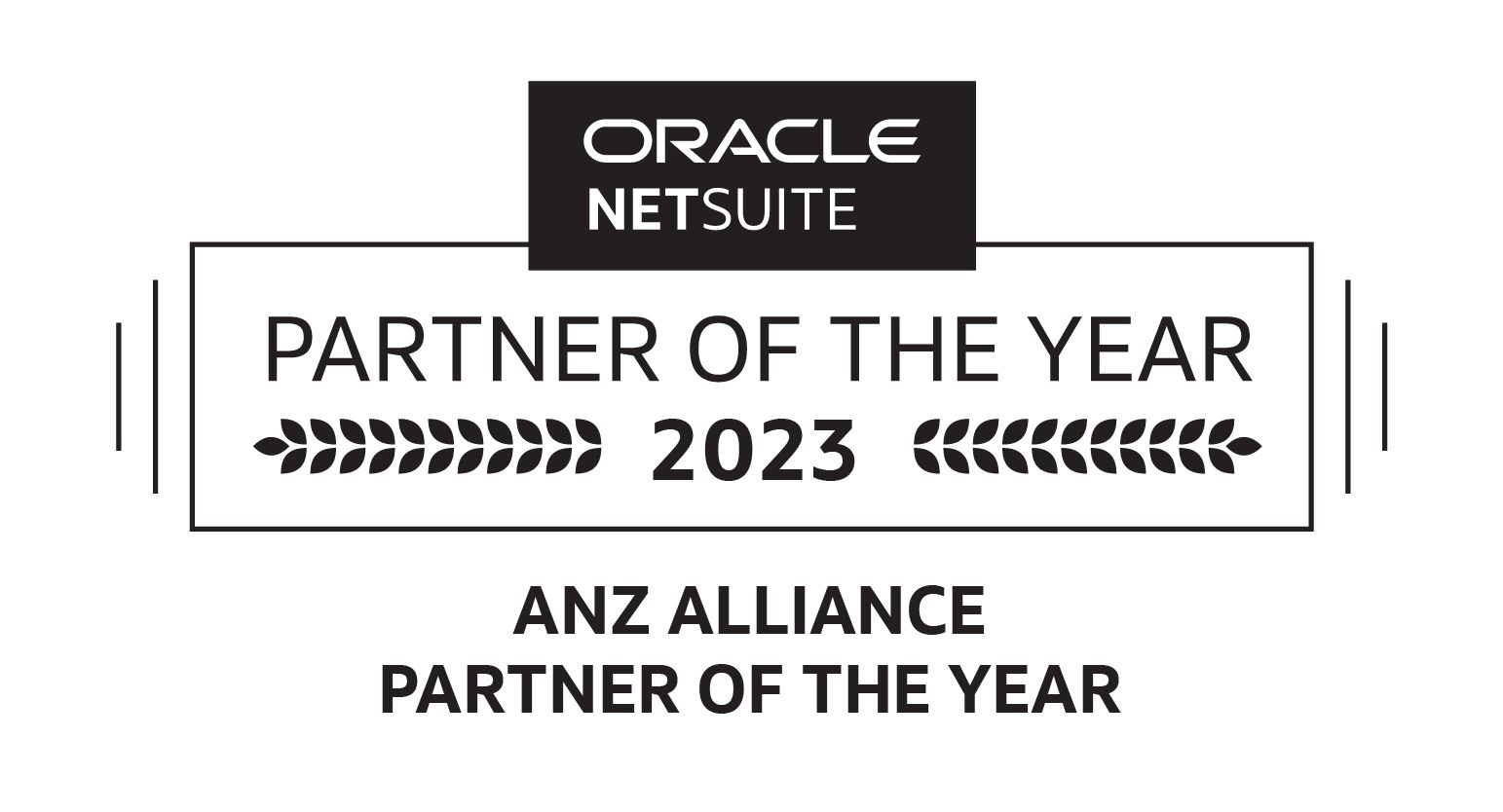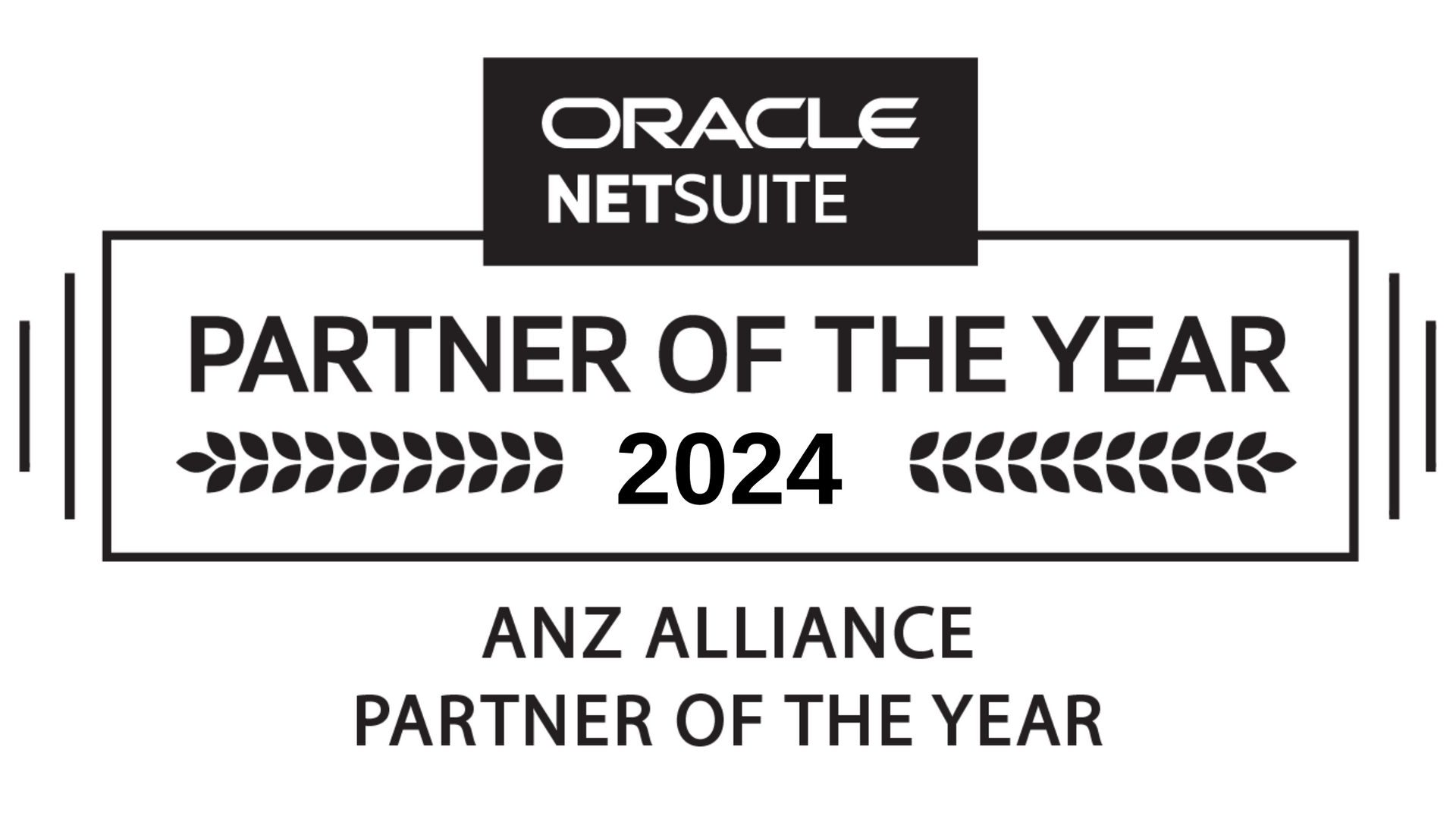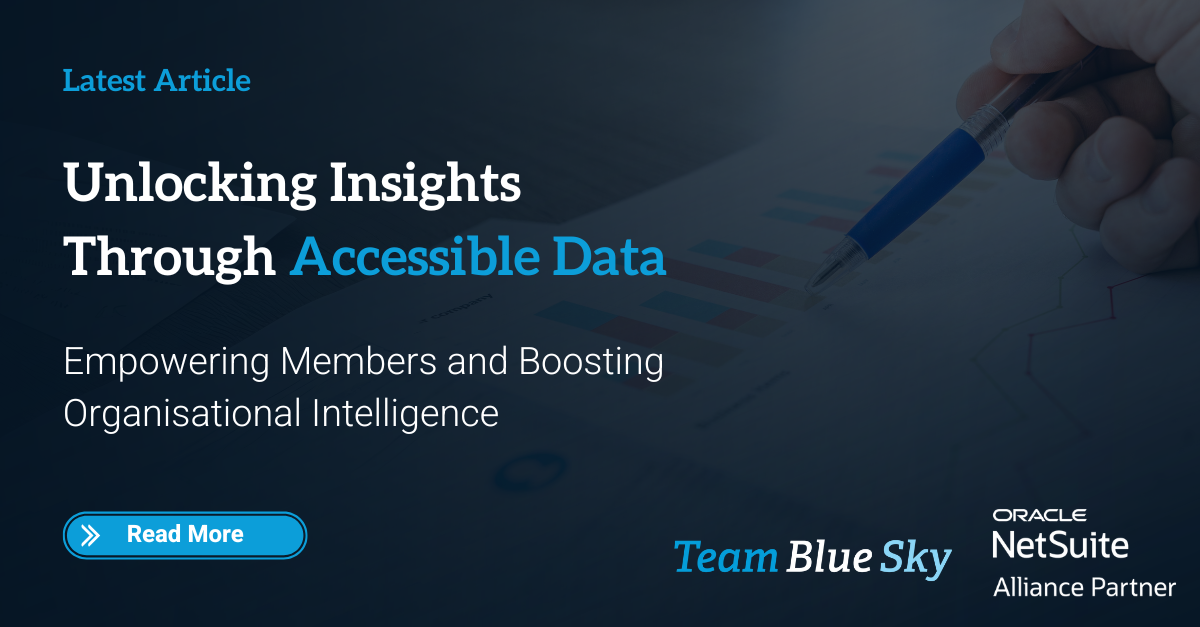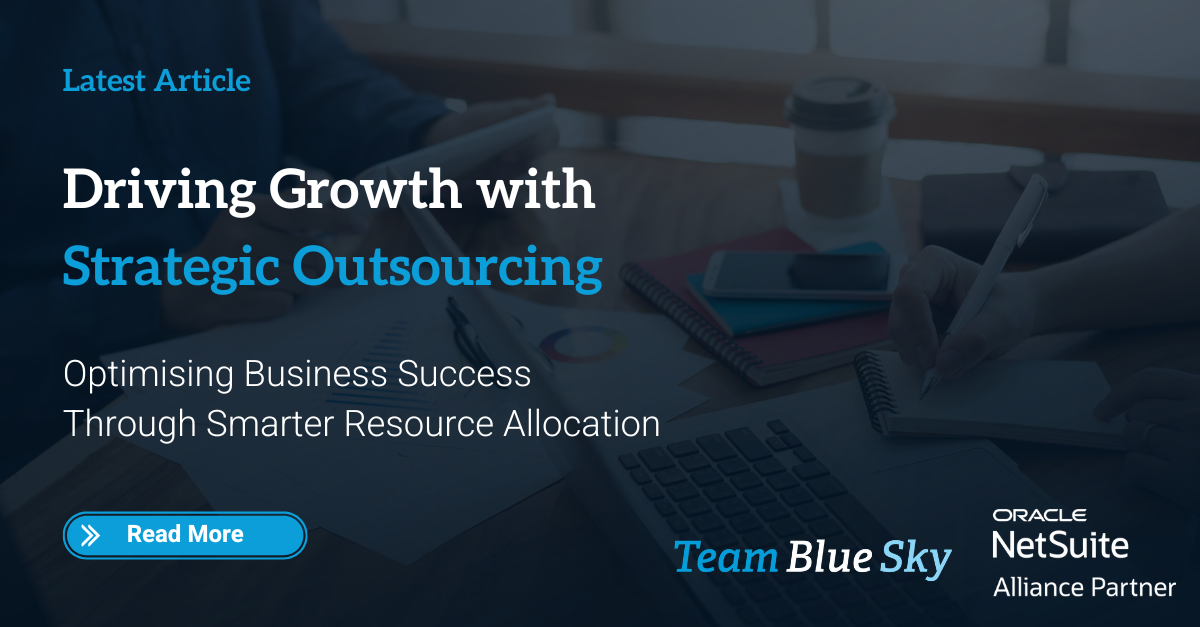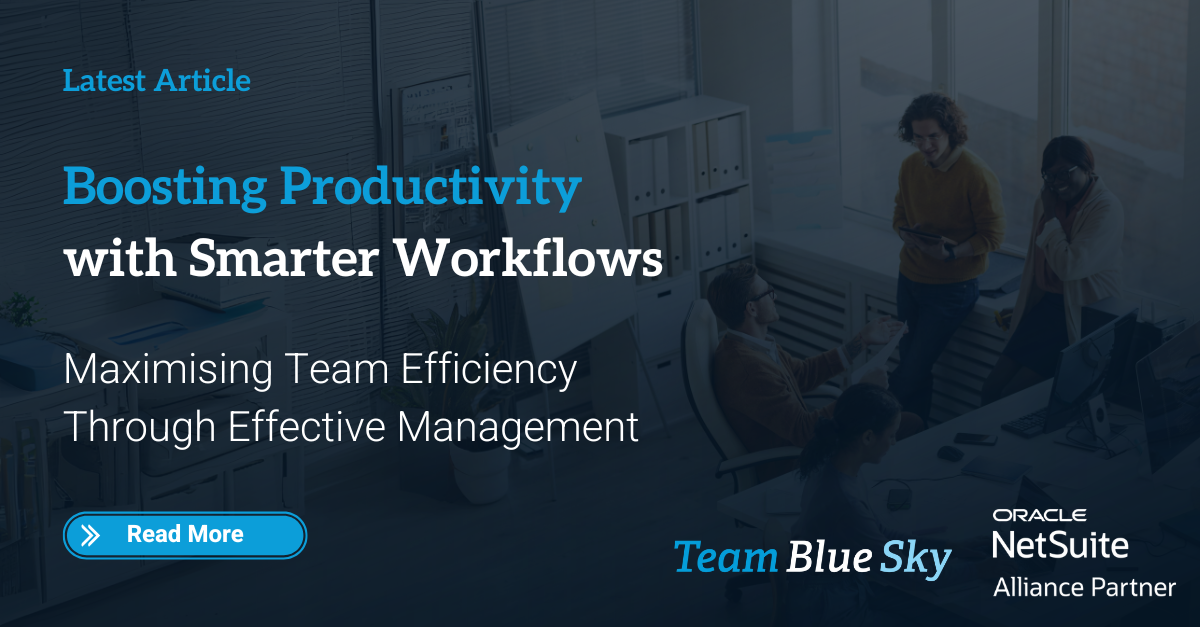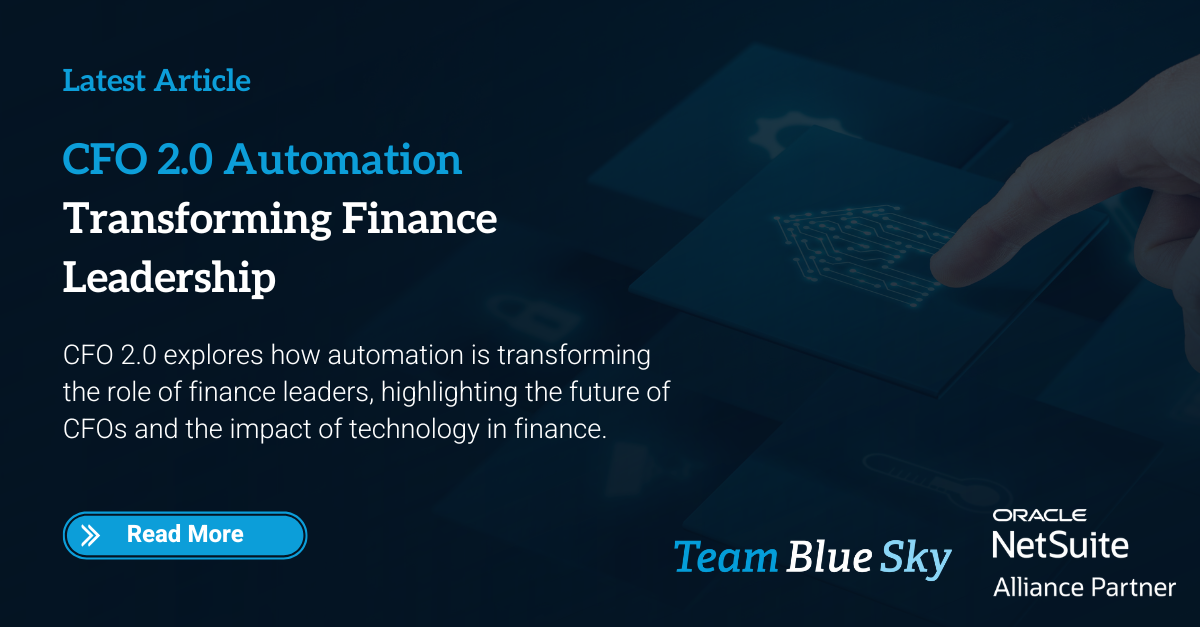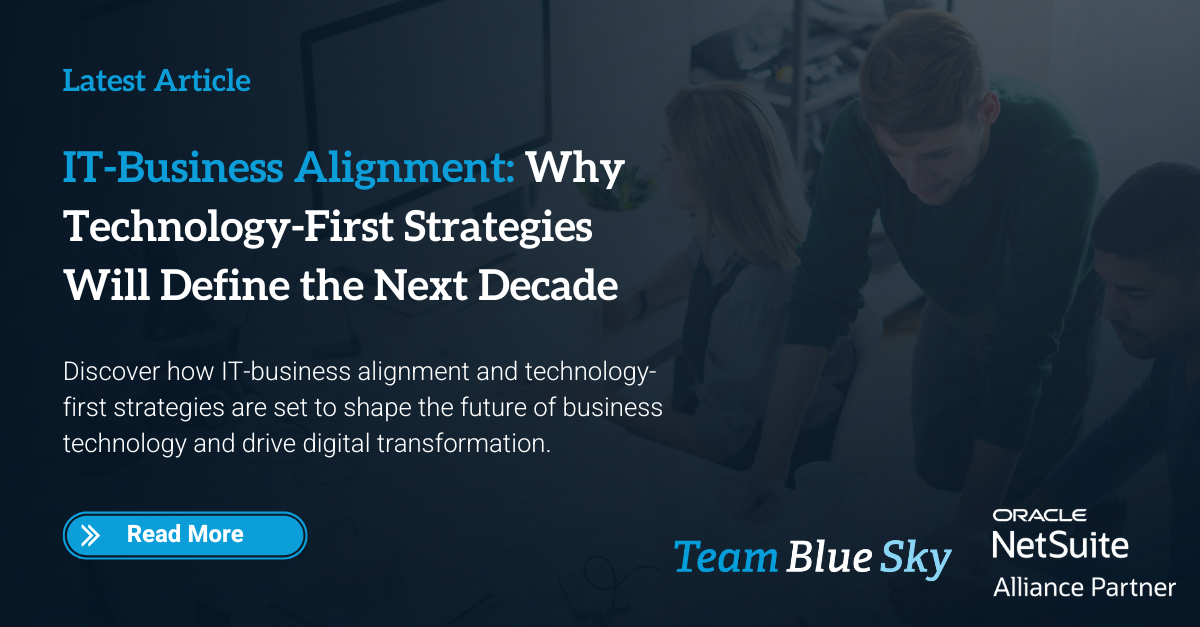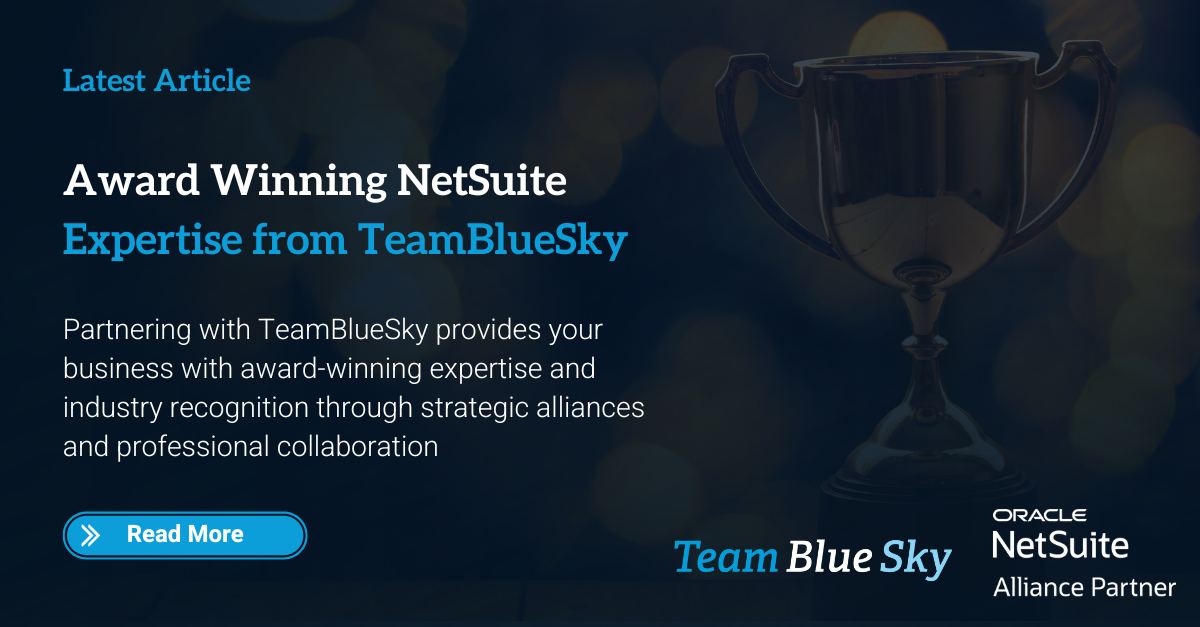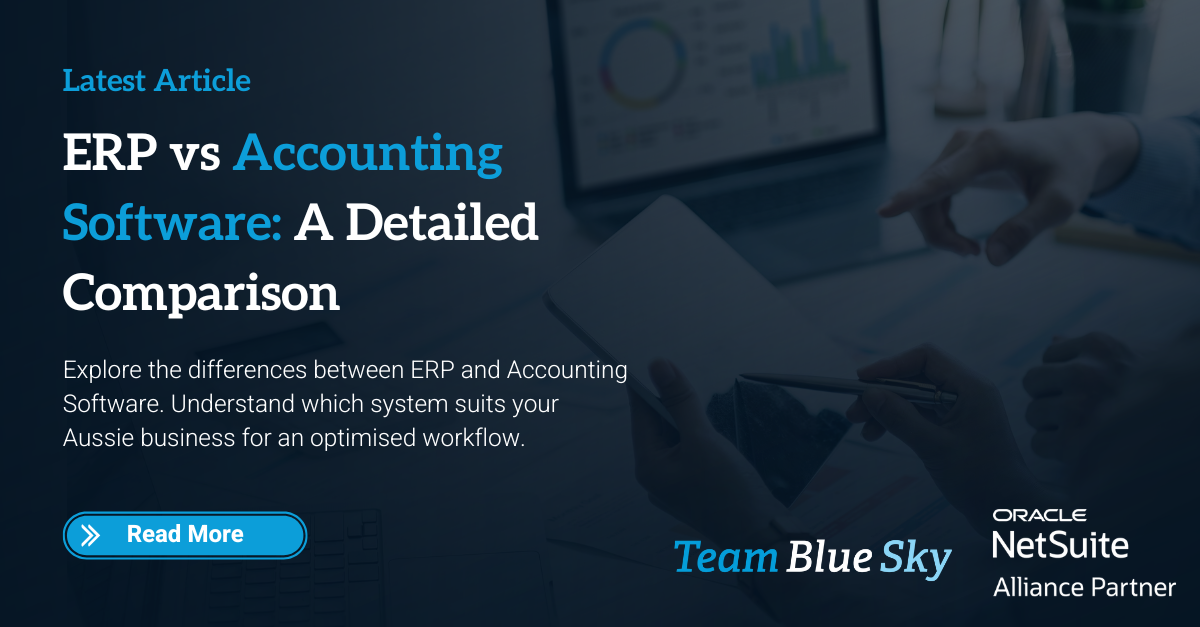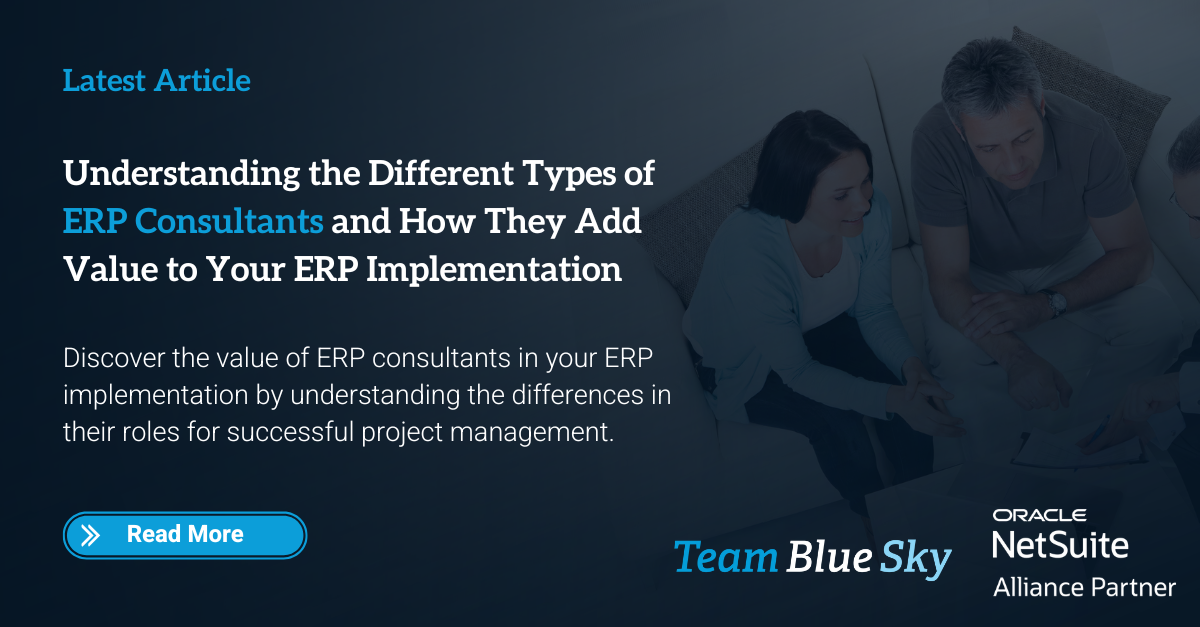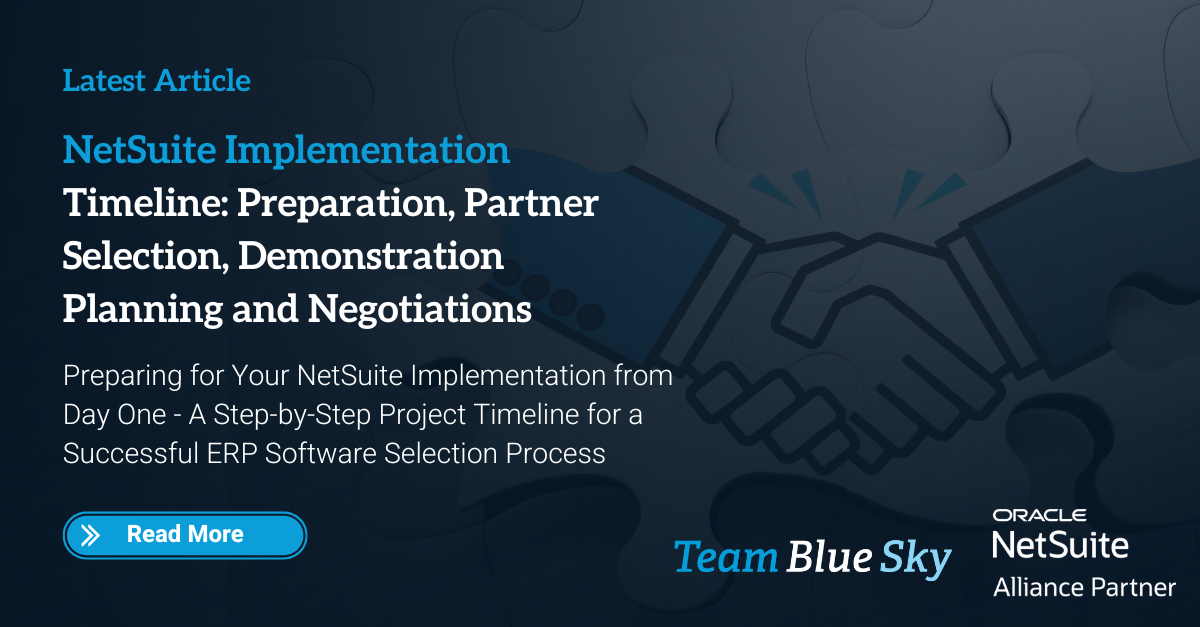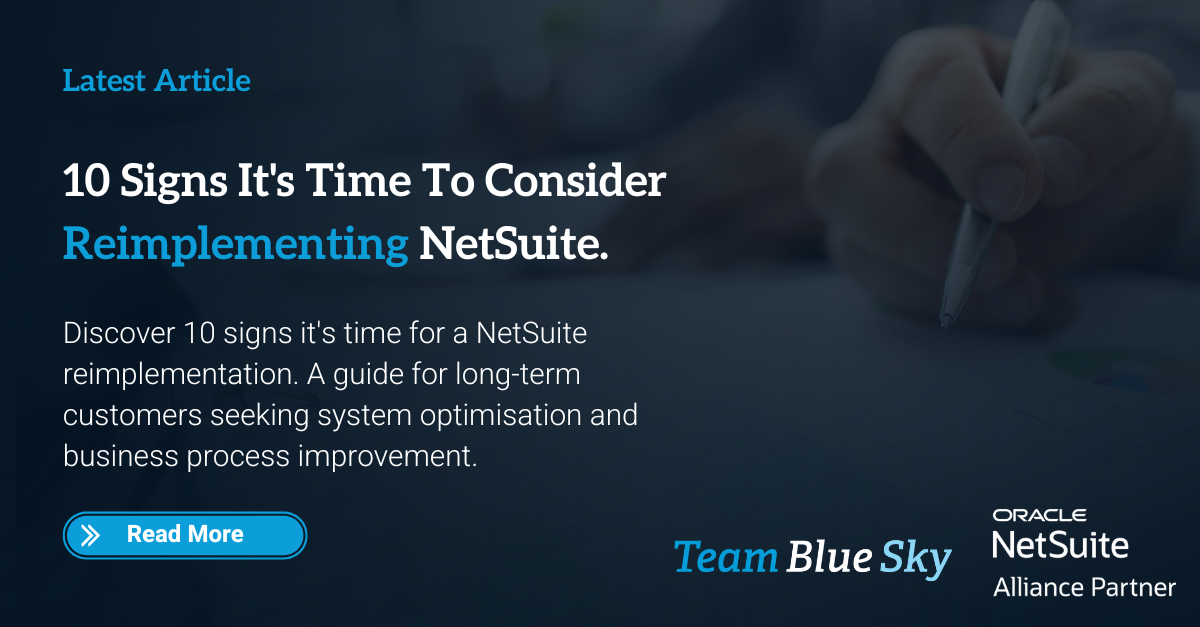The Roadmap to Innovation: How Continuous Software Improvement Drives Business Growth
In today’s hyper-competitive business environment, staying ahead of the curve is not just an advantage, it’s a necessity. Continuous software improvement, powered by technological advancements and agile methodologies, plays a pivotal role in enabling companies to remain innovative, responsive, and growth-oriented. By focusing on an innovation roadmap that revolves around the iterative development of software, businesses can unlock new opportunities, enhance productivity, and ensure long-term success.
This article will explore how continuous software improvement serves as a catalyst for business growth. We will discuss the key components of an innovation roadmap, delve into the benefits of agile methodologies and examine the impact of technology advancement on software development and business strategy. By the end of this article, you will have a clear understanding of how an ongoing commitment to software improvement can transform your business.
Understanding Continuous Software Improvement
What is Continuous Software Improvement?
Continuous software improvement refers to the ongoing process of refining and enhancing software systems over time. Rather than being static or finalised upon release, modern software development embraces a dynamic approach in which features, functionality, and performance are continually improved to meet changing business needs, market demands, and technological advancements.
Unlike traditional software development methods that rely on infrequent, large-scale updates, continuous improvement advocates for smaller, incremental updates that occur frequently. This process allows businesses to adapt to new requirements, fix bugs, improve user experience, and stay competitive.
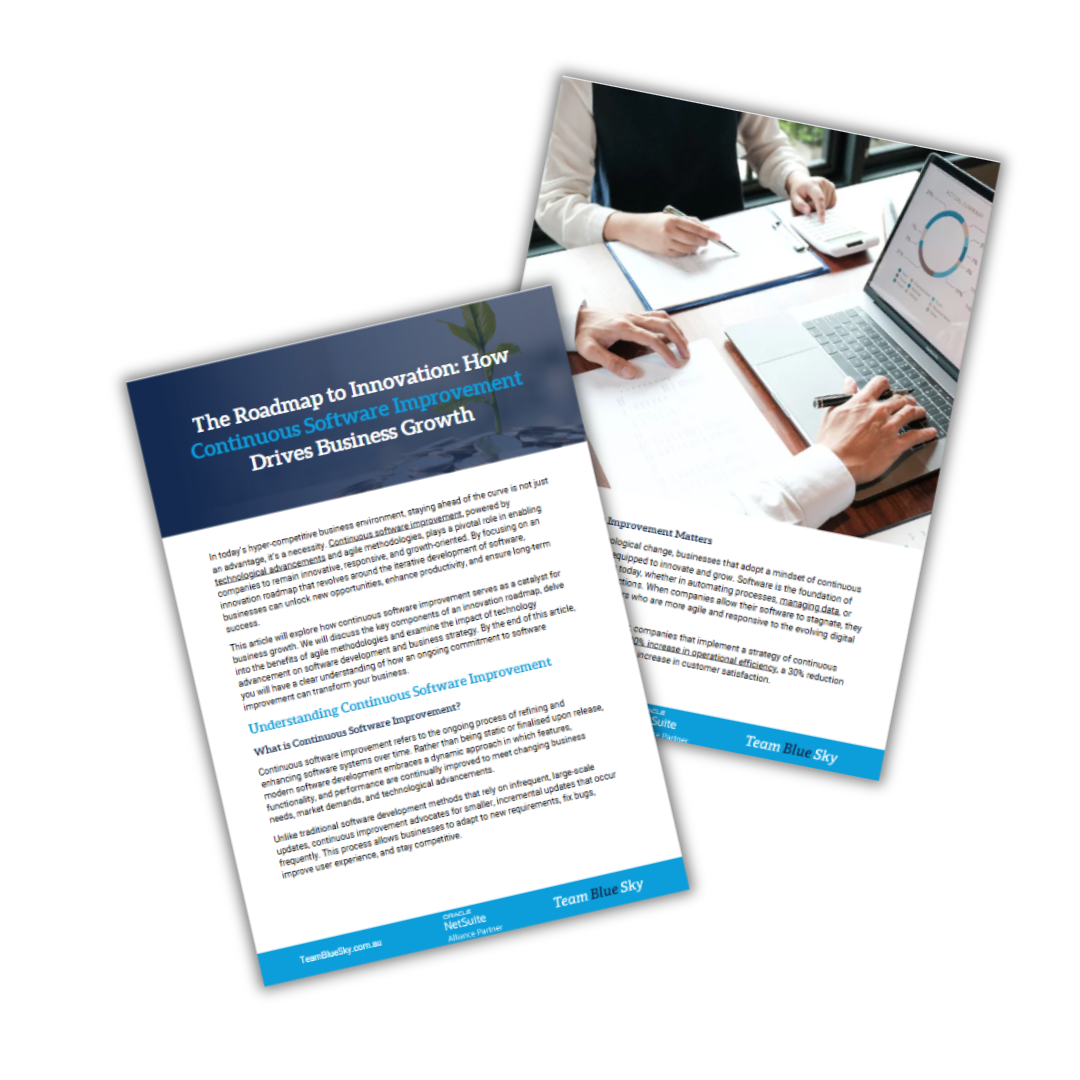
Short on time? Download this article to read later or share with a colleague.
The Roadmap to Innovation: How Continuous Software Improvement Drives Business Growth

Short on time? Download this article to read later or share with a colleague.
The Roadmap to Innovation: How Continuous Software Improvement Drives Business Growth
Why Continuous Improvement Matters
In an era of rapid technological change, businesses that adopt a mindset of continuous improvement are better equipped to innovate and grow. Software is the foundation of most business operations today, whether in automating processes, managing data, or enhancing customer interactions. When companies allow their software to stagnate, they risk falling behind competitors who are more agile and responsive to the evolving digital landscape.
According to a report by Gartner, companies that implement a strategy of continuous software improvement see a 20-40% increase in operational efficiency, a 30% reduction in time to market, and a significant increase in customer satisfaction.
The Innovation Roadmap and Its Role in Business Growth
Defining an Innovation Roadmap
An innovation roadmap is a strategic plan that outlines how a business will evolve its software systems over time to support growth and adapt to market shifts. This roadmap serves as a guide for development teams, helping them focus on priorities and ensuring alignment with broader business goals.
A successful innovation roadmap is not just about planning for the future, it’s about ensuring that every stage of software development and improvement contributes to the company's strategic objectives. The roadmap is typically broken down into short, medium, and long-term goals, which allows businesses to remain flexible while consistently moving toward their innovation targets.
The Innovation Roadmap and Its Role in Business Growth
Defining an Innovation Roadmap
An innovation roadmap is a strategic plan that outlines how a business will evolve its software systems over time to support growth and adapt to market shifts. This roadmap serves as a guide for development teams, helping them focus on priorities and ensuring alignment with broader business goals.
A successful innovation roadmap is not just about planning for the future, it’s about ensuring that every stage of software development and improvement contributes to the company's strategic objectives. The roadmap is typically broken down into short, medium, and long-term goals, which allows businesses to remain flexible while consistently moving toward their innovation targets.
Key Components of a Successful Innovation Roadmap
1. Vision Alignment
The roadmap must be closely aligned with the company’s long-term vision and business objectives. For example, if a company aims to enhance customer engagement, the software development plan should focus on creating user-friendly interfaces, integrating CRM tools, and leveraging data analytics for personalised customer experiences.
2. Agile Development Cycles
To ensure continuous improvement, the innovation roadmap should embrace agile methodologies that allow for flexibility and rapid iteration. Short sprints enable teams to release updates quickly and gather feedback in real time, allowing for course corrections that enhance the final product.
3. Technology Integration
Integrating emerging technologies such as
AI,
machine learning, and
automation should be a key focus of the innovation roadmap. By embracing technological advancements, businesses can optimise processes, offer more sophisticated products and services, and remain ahead of competitors.
4.User Feedback Loop
A continuous feedback loop with users ensures that software improvements are driven by real-world needs. Regularly gathering and implementing user feedback allows companies to create software that not only works efficiently but also meets the expectations of its customers.
The Role of Agile Methodology in Continuous Software Improvement
Agile Methodology Overview
Agile methodology is a project management framework that emphasises flexibility, collaboration, and customer-centric development. It is particularly suited to continuous software improvement because it encourages frequent updates, rapid prototyping, and iterative development cycles. Agile teams work in “sprints, short, focused periods of work that typically last two to four weeks.
One of the primary benefits of agile methodology is that it allows businesses to respond quickly to changes in the market or customer demands. Rather than spending months or even years developing a monolithic software solution, businesses can deliver small, incremental updates that improve the software over time.
How Agile Drives Innovation
1. Faster Time to Market
By breaking down large projects into smaller, manageable sprints, agile teams can bring new features to market faster. This allows businesses to capitalise on new opportunities before competitors have a chance to catch up.
A Harvard Business Review study found that companies using agile methodologies were 1.5 times more likely to be first to market with innovative products.
2. Enhanced Flexibility
In a traditional development environment, making changes mid-project can be costly and time-consuming. Agile methodologies, however, are designed to accommodate change. Teams can pivot quickly when new ideas emerge or when market conditions shift, ensuring that software solutions remain relevant.
3. Customer-Centric Development
Agile focuses on delivering software that meets the needs of customers. By involving stakeholders in every sprint, businesses can continuously gather feedback and make adjustments to ensure that the software aligns with customer expectations. This iterative process leads to higher user satisfaction and loyalty.
How Technology Advancement Fuels Continuous Improvement
The Role of Emerging Technologies
Technology is advancing at an unprecedented pace, and businesses must be proactive in adopting new tools and techniques to stay competitive. Continuous software improvement offers a way for companies to integrate emerging technologies such as artificial intelligence, machine learning, big data analytics, and cloud computing into their existing software systems.
For example, machine learning algorithms can be used to optimise customer experiences by analysing user data and making personalised recommendations. Meanwhile, automation tools can streamline operations, reducing manual tasks and improving overall efficiency.
Business Growth Through Continuous Improvement
Increased Operational Efficiency
One of the most immediate benefits of continuous software improvement is increased operational efficiency. Regular updates allow businesses to streamline processes, eliminate inefficiencies, and optimise their workflows. By automating routine tasks, companies free up valuable time for their employees to focus on higher-value activities that drive growth.
Competitive Advantage
Companies that embrace continuous improvement are more agile and adaptable, allowing them to respond to market changes and customer demands faster than their competitors. This agility gives them a competitive advantage, as they can introduce new features, products, and services while competitors are still working on outdated systems.
Enhanced Customer Experience
Continuous software improvement also plays a critical role in enhancing the customer experience. By regularly updating software based on customer feedback and new technology, businesses can offer more personalised, intuitive, and efficient solutions. This not only boosts customer satisfaction but also improves retention and loyalty.
A Forbes Insights study revealed that companies focused on improving customer experience saw 60% higher profits than those that did not prioritise it.
Key Challenges in Implementing Continuous Software Improvement
Balancing Speed and Quality
One of the primary challenges of continuous software improvement is balancing the need for rapid updates with the importance of maintaining high-quality software. Agile methodologies help address this by incorporating testing into every sprint, but businesses must ensure they don’t sacrifice quality for speed.
Aligning Teams and Stakeholders
Continuous improvement requires strong collaboration between development teams, stakeholders, and users. Misalignment between these groups can slow progress and lead to software that doesn’t fully meet the company’s needs. Clear communication, regular check-ins, and strong leadership are essential for keeping everyone on the same page.
Managing Change Effectively
Frequent updates can cause disruption if not managed correctly. Businesses must carefully plan their software rollouts to avoid overwhelming users with too many changes at once. Proper change management strategies can help mitigate these challenges, ensuring that improvements are implemented smoothly and without disruption.
Final Thoughts
Continuous software improvement is not just a strategy for keeping up with technological change, it’s a roadmap to innovation and business growth. By adopting agile methodologies, creating a forward-looking innovation roadmap, and leveraging the latest technological advancements, businesses can remain competitive, agile, and customer-focused.
The benefits of continuous software improvement are clear: increased operational efficiency, faster time to market, enhanced customer experience, and long-term competitive advantage. While challenges may arise, businesses that commit to ongoing improvement are better positioned to succeed in today’s fast-evolving landscape.
Key Takeaways
- Continuous software improvement drives innovation and business growth by allowing companies to adapt quickly to market changes and evolving customer needs.
- Agile methodologies enable faster development cycles, providing businesses with greater flexibility and customer-centric innovation.
- Incorporating emerging technologies such as AI and automation into the software improvement process can enhance operational efficiency and improve customer experience.
- An innovation roadmap aligned with business goals is essential for guiding software development and ensuring long-term success.
By embracing continuous improvement, businesses can future-proof their operations, deliver superior value to customers, and create a sustainable path to growth.

Henry Sack
General Manager

With over 12 years of experience as a NetSuite implementation consultant, Henry Sack leads TeamBlueSky’s team of NetSuite and accounting experts in his role of General Manager.
TeamBlueSky is a leading Australian
NetSuite Alliance Partner whose mission is to provide critical
NetSuite BPO and
Payroll services to NetSuite clients who are wanting to simplify their
back office processes and partner with a leading
NetSuite administration expert.
TeamBlueSky have also partnered with global Suite Developer Network partners to offer local solutioning, implementation and support services for global NetSuite SuiteApps.
More From Our Blog
Interested in learning more?
Let TeamBlueSky take care of your accounting and back office administration while you focus on growing your business.
Send Us An Enquiry
We will get back to you as soon as possible.
Please try again later.
Contact Us
Phone: 1300 174 382
Email: hello@teambluesky.com.au
Address: PO Box 880, Glenelg, SA, 5045, Australia
Useful Links
Keep Up To Date With Our Latest News and Best Advice
You need a helping hand with your project?
We will get back to you as soon as possible
Please try again later
All Rights Reserved | TeamBlueSky
Website Created and Managed by SaaSMouth - NetSuite Marketing Specialists


